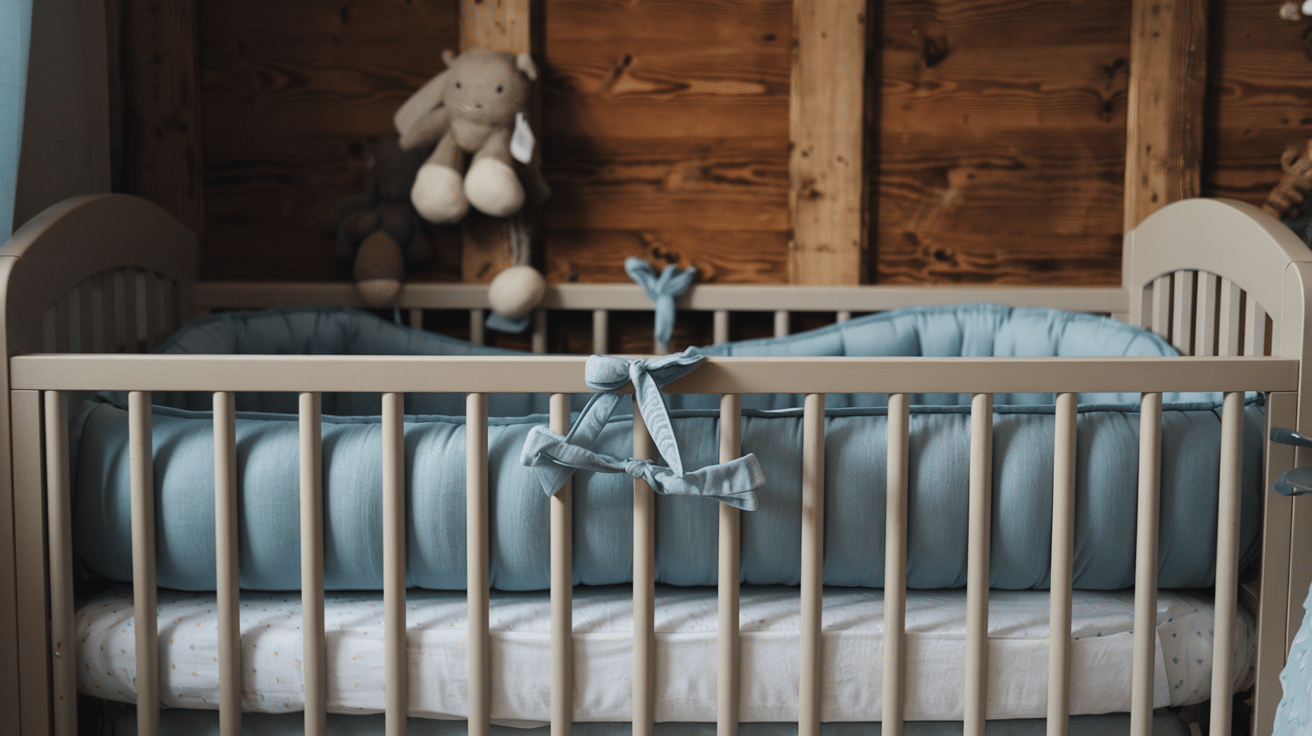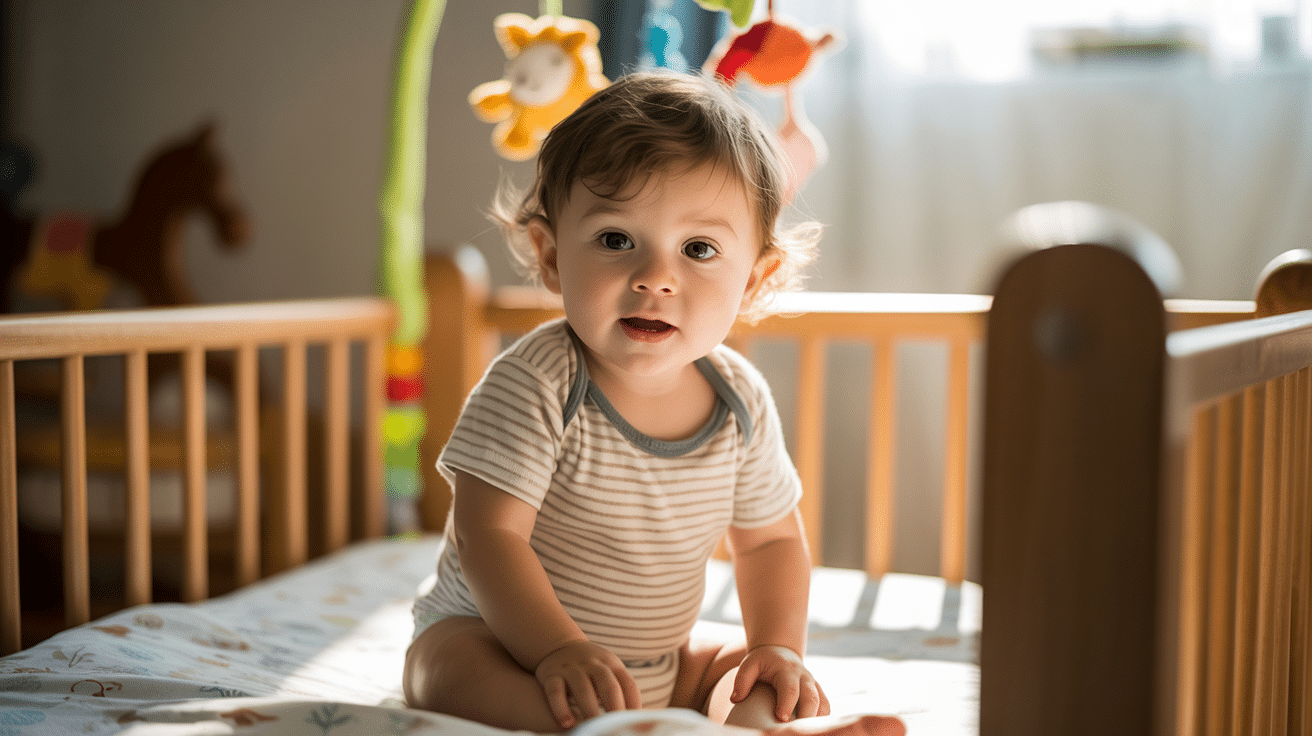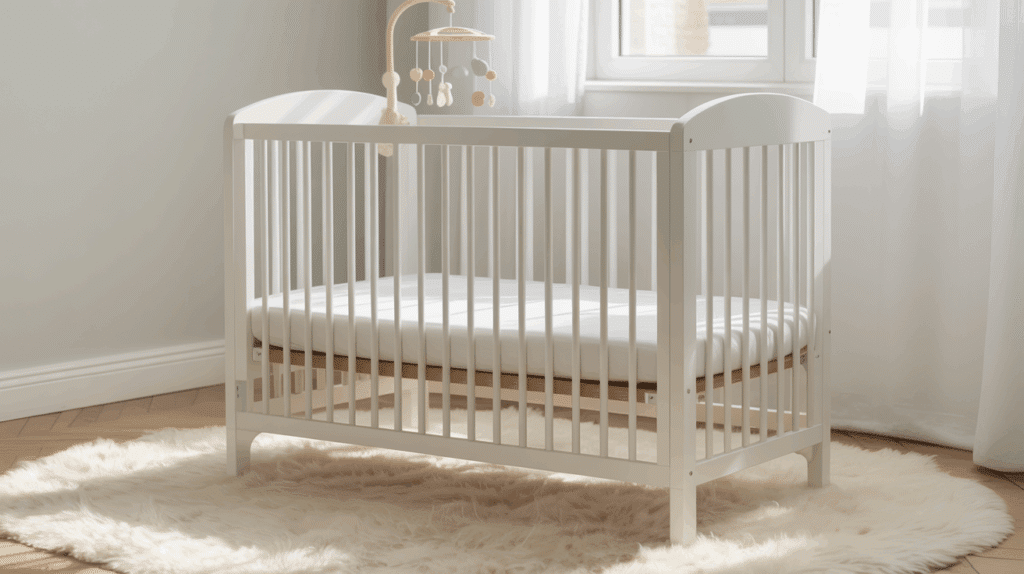Crib safety matters a lot when you set up your baby’s nursery. As your baby grows, you might wonder how much weight a crib can hold.
What about when your toddler jumps? Or when big brothers or sisters want to sit in it, too? Many parents have these questions.
Cribs look strong, but they do have weight limits you should know about.
Let’s talk about how much weight can a crib hold, how to find this info for your crib, and what to watch for as your child gets bigger.
Understanding Crib Weight Limits: What Parents Need to Know?
A crib weight limit is the maximum weight a crib can safely hold, including the baby and any items like blankets or toys.
Parents must stay within this limit to ensure their child’s safety, as exceeding it could cause the crib to break and result in injury.
Weight limits for different crib types:
- Standard cribs: Most can safely hold up to50 pounds, making them suitable for babies and toddlers within this range.
- Mini cribs: These typically support 35 to 50 pounds and work well for younger babies.
- Convertible cribs: Often handle 50 pounds or more since they transform into toddler beds.
When a child exceeds the weight limit, crib components may weaken or become unstable. This can cause accidents like mattress collapse or crib failure.
Parents should always check weight limits before purchasing and follow the manufacturer’s guidelines. Once a child approaches the limit, transitioning to a toddler bed ensures continued safety.
What Factors Influence Crib Weight Limits?

Understanding how much weight can a crib hold requires looking at several important factors that affect a crib’s capacity:
- Material and build quality: Cribs made from strong materials like hardwood or sturdy metal can hold more weight than those made from lighter or softer materials. The way the crib is built, including the frame and mattress support, also matters.
- Crib design: Some cribs, like convertible cribs, are designed to support more weight because they can change into toddler beds or other furniture. Portable or lightweight cribs often have lower weight limits.
- Safety standards: Manufacturers follow safety rules set by groups like the Consumer Product Safety Commission. These rules help decide the weight limit to ensure the crib is safe for babies.
- Combined weight: The weight limit includes the baby and anything else in the crib, such as blankets or toys. Parents should not put extra-heavy items in the crib.
- Child’s growth: Babies grow quickly. Parents must monitor their children’s weight and move them to a bigger bed when they reach the crib’s weight limit.
Crib weight limits depend on the materials, design, safety standards, total weight inside, and the child’s growth.
Always check the manufacturer’s instructions and follow the weight limit to keep your baby safe.
Choosing the Best Crib Material for Your Needs
When parents research how much weight can a crib hold, material choice becomes a crucial factor. Choosing the right crib material impacts both safety and durability.
Here’s a quick view of the most commonly used crib materials and their key features.
| Material | Weight limit | Pros | Cons |
|---|---|---|---|
| Solid wood | 50–60 pounds | Extremely durable, long-lasting, and supports more weight. | Heavy to move, more expensive, and may chip or crack over time. |
| Pine wood | 40–50 pounds | Budget-friendly, lightweight, and visually appealing. | Softer than hardwood, dents easily, and requires more care. |
| Oak wood | 50–60 pounds | Very strong, resists damage, and suits active babies. | Very heavy, higher cost, and difficult to move. |
| Metal | 45–55 pounds | Tough, easy to clean, and holds weight well with a sleek look. | It can rust if scratched, feels cold, and may bend under heavy stress. |
| Plastic | 30–40 pounds | Lightweight, low-cost, and easy to transport or clean. | Not as durable, may crack or fade with use and sunlight exposure. |
Tips to Stay Within Safe Weight Limits

Knowing how much weight can a crib hold is just the first step. Keeping your baby’s crib safe means watching the weight that goes in it.
Here are simple tips to help you stay within the safe weight limits of your crib:
- Check Manufacturer Guidelines: Always refer to the crib’s user manual for specific weight limits. Each crib, based on its design and materials, has its own maximum weight capacity.
- Avoid Overloading: Do not place heavy items (e.g., extra mattresses, toys, or blankets) in the crib. Only include what is necessary for your baby’s comfort and safety.
- Use the Crib for Its Intended Purpose: Cribs are designed for sleeping, not for playtime or as a storage space. Avoid letting older children or pets sit or climb inside.
- Monitor Mattress Weight: If you’re using a thicker or heavier mattress, make sure it’s within the crib’s weight capacity, as heavy mattresses can sometimes exceed the recommended limits.
- Avoid Adding Extra Layers or Items: Extra pillows, blankets, or comforters can add unnecessary weight, which might exceed the crib’s capacity. Stick to a fitted sheet and a safe sleeping bag.
- Consider Weight Distribution: Ensure that the weight in the crib is evenly distributed, especially when your baby is transitioning from a bassinet to a crib.
To Conclude
Understanding how much weight can a crib hold is about more than just numbers; it’s about keeping your baby safe. Most cribs hold between 35-50 pounds, but each one is different.
Look for signs that your child is outgrowing the crib, like climbing attempts or reaching 35 pounds.
Don’t wait until you reach the maximum weight before planning the switch to a toddler bed. Regular safety checks and following the tips we’ve covered will help keep your little one secure.


















